Wildcat1750
Gold Member
- Nov 18, 2012
- 5,015
- 4,107
- 🏆 Honorable Mentions:
- 4
- Detector(s) used
- AT PRO/Ace 250w8.5x11" DD Coil/
Garrett Pro-Pointer/Garrett Pro-Pointer AT/
Vibra-Tector 730/
Radio Shack Discovery 1000 (Tracker IV)
- Primary Interest:
- All Treasure Hunting
Over the years, while metal detecting, and moving earth in my yard for various household projects, I have been finding many shell and quartz fragments. Being the collector that I am, and suspecting some sort of American Indian potential around here, I have saved them all. See my earlier thread: http://www.treasurenet.com/forums/n...ents-question-indian-post-colonial-later.html for group photos of the fragments. As promised, here is the follow up thread…
Recently I have found what I believe to be my first good artifacts. Last weekend I had them looked at by an archeologist at the Institute For American Indian Studies in Washington, Connecticut on Artifact Identification Day. I will describe them as she did here but I am certainly open to second opinions or embellishments.
My first was found while metal detecting in the field along with a one piece flat button. It was identified as a Black Chert Bi-face that has been retouched. There are pot lid fractures on it from fire. It is not from the local area and the age is unknown.
My second find and my first quartz point was recovered while screening my topsoil stockpile to fill in a sinkhole. It was identified as a Narrow Stem Point, Wading River Knife from the Late Archaic to Early/Middle Woodland Period. Unfortunately the point is broken.
My third find was identified as a Beaver Tooth. It was also screened from the topsoil stockpile.
Thanks for Looking!
Nick
Recently I have found what I believe to be my first good artifacts. Last weekend I had them looked at by an archeologist at the Institute For American Indian Studies in Washington, Connecticut on Artifact Identification Day. I will describe them as she did here but I am certainly open to second opinions or embellishments.
My first was found while metal detecting in the field along with a one piece flat button. It was identified as a Black Chert Bi-face that has been retouched. There are pot lid fractures on it from fire. It is not from the local area and the age is unknown.
My second find and my first quartz point was recovered while screening my topsoil stockpile to fill in a sinkhole. It was identified as a Narrow Stem Point, Wading River Knife from the Late Archaic to Early/Middle Woodland Period. Unfortunately the point is broken.
My third find was identified as a Beaver Tooth. It was also screened from the topsoil stockpile.
Thanks for Looking!
Nick
Attachments
Upvote
0


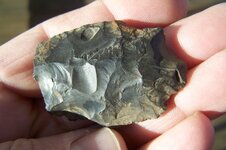
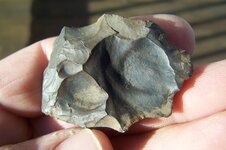
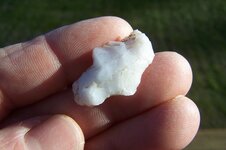
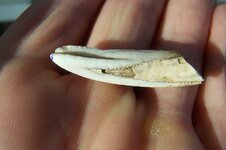
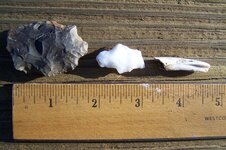

 I have gridded my property several times a year for the last 10 years with my metal detector and still manage to find new things...usually early 20th century or CW era but I am hitting more Colonial relics now. It's harder for me to find the stone tools, unless one happens to be in the hole when I'm recovering a target, or if I'm working that dirt pile. I think of it as my "upside down honey hole".
I have gridded my property several times a year for the last 10 years with my metal detector and still manage to find new things...usually early 20th century or CW era but I am hitting more Colonial relics now. It's harder for me to find the stone tools, unless one happens to be in the hole when I'm recovering a target, or if I'm working that dirt pile. I think of it as my "upside down honey hole". 
